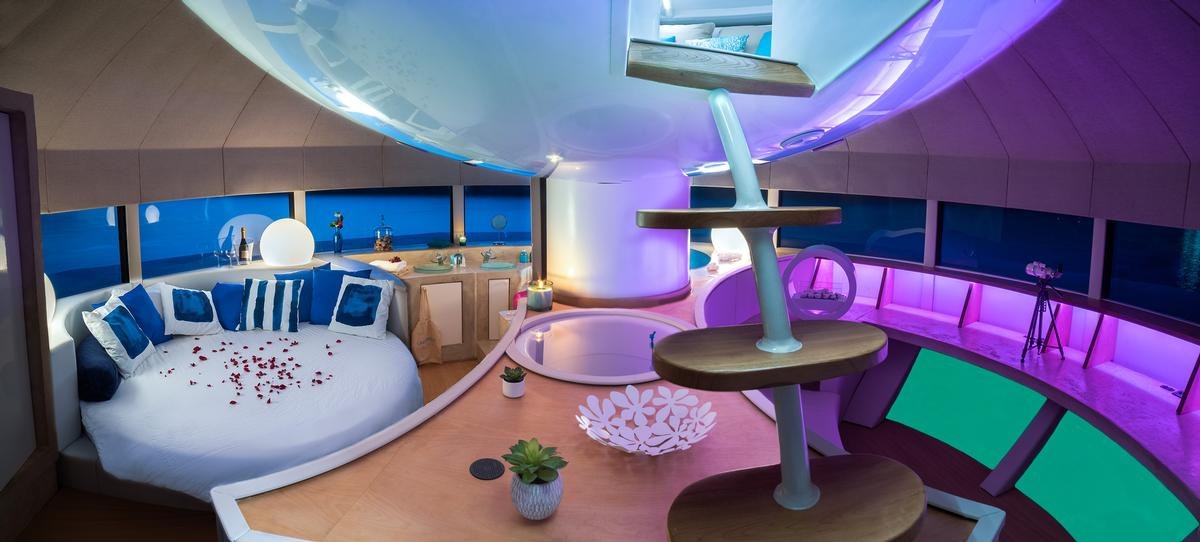As travelers, we desire to get even further away from our everyday worlds, to experience pristine natural environments well off the beaten path. Affluent demographics seek an upgraded immersion while visiting the planet’s most tranquil, remote and environmentally sensitive places — one that involves the six-star luxuries they’ve grown accustomed to in their daily lives.
While these requests are attainable, building the complex infrastructures of a luxury resort can compromise those very ecosystems that people long to experience. It's a quandary. The architecture industry is exploring solutions to lead hotels toward sustainable luxury with little to no footprint.
One Solution: Movable Hotels
Movable hotels reinvent the concept of luxury travel through portable solutions that permit deeper experiences of nature while leaving no trace. In Luxury Frontiers, Jesús Parrilla writes that he expects: “the luxury travel industry to take on a different role: to bring people back to a balanced state via ‘rewilding’ efforts ... [which] would involve learning from the land, wild plants and animals.”
Architects and the hospitality industry are challenged to rewild travel itself, asking what becomes possible when hotels don’t have to be permanently tied to specific sites? Nomadic hotels are the newest iteration in an evolution that began with the tent and became refined with the recreational vehicle. Now custom mobile pods allow luxury resorts to go places where no inn has gone before, providing guests with a far deeper immersion in nature.
Zero Footprint
Hotels have long wished for a way to host guests without environmentally invasive construction. Now they can use structures with such a light footprint that they leave no trace at all. Movable hotels could well be the only viable solution for accommodations in no-permit parks and conservation areas. And because installation is quick, they could be placed in locations that were once only accessible for a short season. One location that may benefit is remote alpine meadows that are under impassable snow and ice for much of the year.
Rather than modifying each site to accommodate visitors, the structures adapt to their environment, just as plants and animals adapt to theirs. Like wildlife, these pods pack up and move on, leaving no footprints. Movable hotels can actually follow the wildlife the way guests in tented camps follow the Great Migration in the Serengeti National Park. Inspired by that concept, architects are evolving it with structures that offer luxury and comfort far beyond even the most refined glamping experience. Habitāre for example, from OBMI’s Innovation Lab, provides guests wilding experiences with the comforts of plunge pools and firepits on private decks.
Movable hotels are already transforming travel. One hotelier, Habitas, uses 3D printing to send flat-pack components to destinations such as the Yucatan and Namibia. With limited impact to local environments, they become villas at the edge of heritage sites and wildlife habitats. With movable hotels often designed for net zero operations, this concept answers the ever-increasing desire for regenerative travel, to leave the world better than we find it.
An Expanded Experience of Luxury
Guests will compromise nothing. Expansive floor plans transition seamlessly between the indoors and outdoors, inviting travelers to stretch out and breathe in a way that compact hotel rooms cannot. Spas and restaurants become novel contextual experiences. Increasingly, "luxury" refers to experiences that are exclusive to a fortunate few. Movable hotels are therefore the ultimate luxury.
Solutions for a Changed and Changing World
While demand for responsible stewardship was the original driver of these eco-friendly design ideas, 2020 transformed the world in ways that make the mobile concept more relevant than ever. The global pandemic inspired a need to distance ourselves from other people. Self-contained, portable pods in deep nature are now the ultimate safe space.
The concept of sustainability is now the norm and guests are raising their expectations. New York Times writer Elaine Glusac explores the changing shape of the industry in “Move Over, Sustainable Travel. Regenerative Travel Has Arrived."
“Some in the tourism industry are planning for a post-vaccine return to travel that’s better than it was before March 2020 — greener, smarter and less crowded," Glusac wrote. "If sustainable tourism, which aims to counterbalance the social and environmental impacts associated with travel, was the aspirational outer limit of ecotourism before the pandemic, the new frontier is 'regenerative travel,' or 'leaving a place better than you found it.'”
In our changing reality, this new concept of a luxury getaway addresses the traveler’s desire to be immersed in the wild, as well as responding to their longing to make the world better. Regenerative travel gives hospitality a chance to reset, moving to new opportunities.

